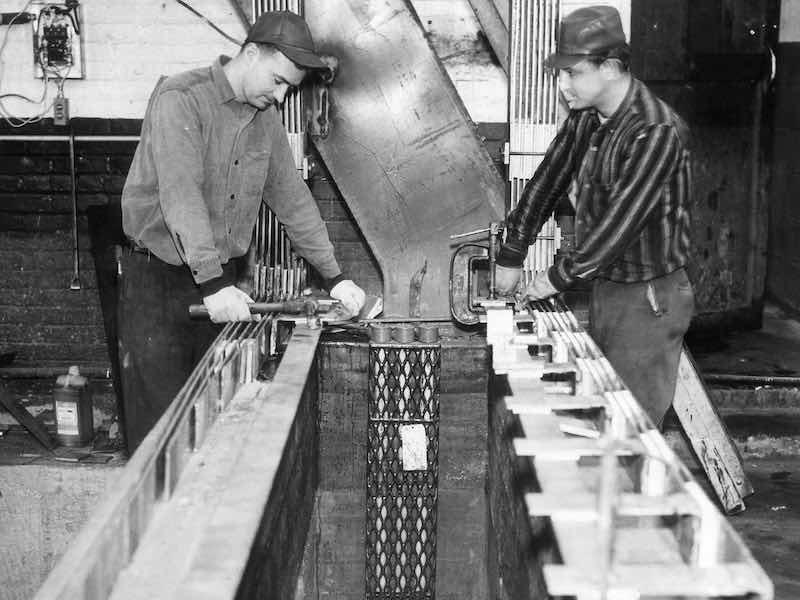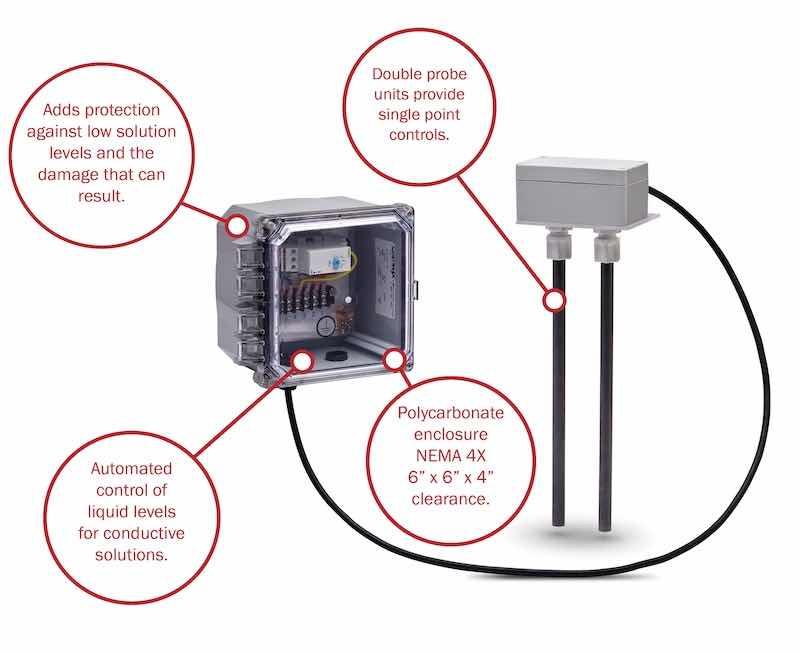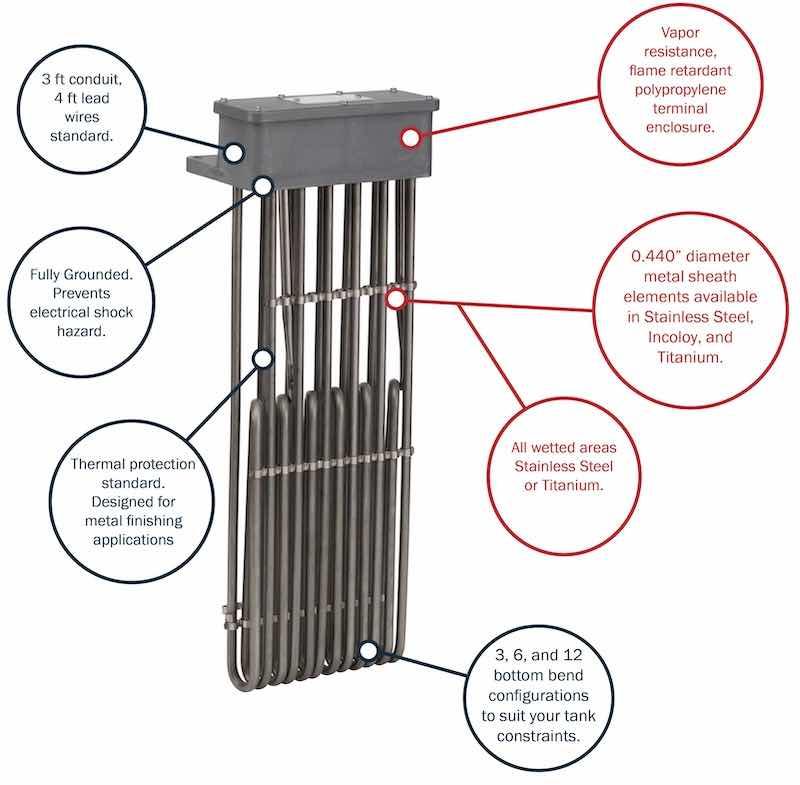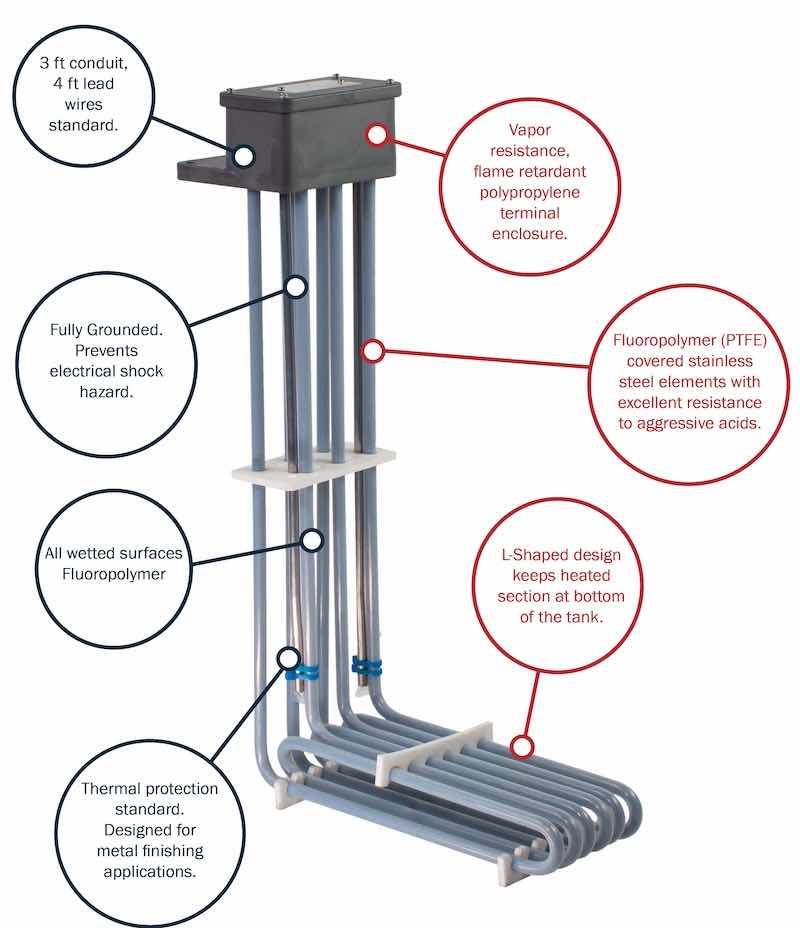Electric immersion heaters have been widely used in the metal finishing industry since the 1930s when automobile ownership rose in the USA.
 Luke LeonardEarly cars — such as the Model T Ford — lacked the safety features we take for granted today. Innovations such as seat belts, airbags, anti-lock brakes, and improved crash safety standards have made modern cars significantly safer than they were in the past.
Luke LeonardEarly cars — such as the Model T Ford — lacked the safety features we take for granted today. Innovations such as seat belts, airbags, anti-lock brakes, and improved crash safety standards have made modern cars significantly safer than they were in the past.
Similarly, immersion heaters in the metal plating industry initially lacked safety features. However, like cars, heater safety features have developed over the decades, making them a safe tool for metal finishing when operated correctly. This article outlines requirements for the safe operation of immersion heaters in metal finishing environments.
The Basics of Safe Operation
 Electric immersion heaters have been used in the finishing industry since the 1930s.Like any electrical equipment, immersion heaters should be installed by a professional according to the standards set out by the NEC and any local codes. To prevent shock hazards, only heaters with a grounded construction should be used and installed properly.
Electric immersion heaters have been used in the finishing industry since the 1930s.Like any electrical equipment, immersion heaters should be installed by a professional according to the standards set out by the NEC and any local codes. To prevent shock hazards, only heaters with a grounded construction should be used and installed properly.
The harsh chemicals used to prepare parts are a unique and necessary part of metal finishing. Chemicals that would otherwise corrode a stainless steel tank must be contained in PVDF, polypropylene, polyethylene tanks, or tank liners. However, the flammability of these materials creates a challenge for immersion heaters. At the same time, these plastics have self-extinguishing properties; polypropylene, in particular, can ignite and burn when exposed to sufficient heat. The material has a flash point of around 320°C (608°F).
The Key to Safety: Liquid Level Controls
 An immersion heater immersed in liquid will operate well below polypropylene’s ignition point. However, should the liquid level drop and expose the heated section of the heater to air, it is possible to radiate high heat that could ignite the tank.
An immersion heater immersed in liquid will operate well below polypropylene’s ignition point. However, should the liquid level drop and expose the heated section of the heater to air, it is possible to radiate high heat that could ignite the tank.
Therefore, keeping the heated section of a heater immersed while it is running is critical to safe operation. This is why liquid-level controls are required for heaters in the metal finishing industry.
Liquid level controls monitor the liquid level in a tank. If the level drops below a predetermined threshold, these controls turn off the power to the heater and activate a safety light or alarm. This is the most effective way to prevent a potential fire hazard.
Thermal Protectors
 Should the liquid level control fail, the heater has a secondary line of defense—the heater’s “thermal protector.” Thermal protectors are sensors mounted on a heater’s element that is calibrated to cut power to the heater once they detect a pre-set temperature.
Should the liquid level control fail, the heater has a secondary line of defense—the heater’s “thermal protector.” Thermal protectors are sensors mounted on a heater’s element that is calibrated to cut power to the heater once they detect a pre-set temperature.
In practice, this means that should the heater run in air, the thermal protector will sense the element's surface temperature and turn the heater off once it reaches 100°C, 150°C, or 200°C (depending on the thermal protector used).
It is important to note that while a thermal protector works to prevent damage to the tank, an over-temperature event has already occurred by the time it detects it. This is why thermal protectors, while essential, are not a substitute for liquid-level controls. Liquid-level controls are the fence at the top of the cliff, and thermal protectors are the ambulance at the bottom.
“L-Shaped” Bottom Heater Design
 Putting the heat horizontally at the bottom of the tank rather than on the sides also helps reduce the incidence of overheating events due to a low liquid level.
Putting the heat horizontally at the bottom of the tank rather than on the sides also helps reduce the incidence of overheating events due to a low liquid level.
Again, while “L-Shaped” or “bottom” heaters reduce the incidence they still need the above features for safe operation.
Don’t be Penny Wise, Pound Foolish
We have a customer who recently learned this the hard way. By trying to save money by skipping liquid level controls, they relied on operators to routinely inspect liquid levels. This worked well until the absence of a key staff member one day, which meant the heaters were not turned off on Friday evening and instead were left running over a weekend in an empty shop. Running all weekend without anyone, one of the heaters evaporated off liquid, exposed the heated section to air, and ignited a polypropylene tank.
The consequences were that half the tanks in the shop and part of the roof had to be replaced. While covered by insurance, lost production, disappointed customers, and bad publicity, the plating shop paid dearly for a fire that could have been avoided with liquid level control.
In conclusion, the evolution of safety features in immersion heaters parallels advancements in the automotive industry. Modern immersion heaters now come with critical safety mechanisms like liquid level controls and thermal protectors, reducing the risk of fires and other hazards. Ensuring these features' correct installation and use protects equipment, facilities, and businesses. Speak with an expert on how you can ensure your immersion heater setup is as safe and reliable as possible.
Luke Leonard is the President of Heatmax Heaters. Visit https://heatmaxheaters.com



































